
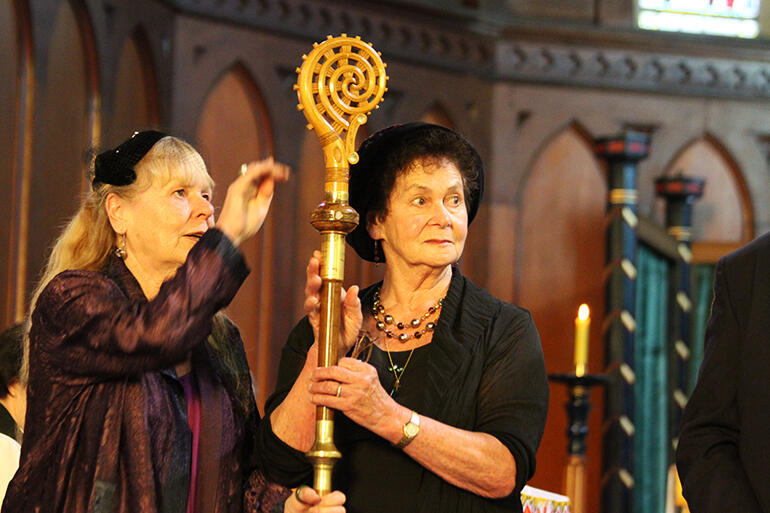
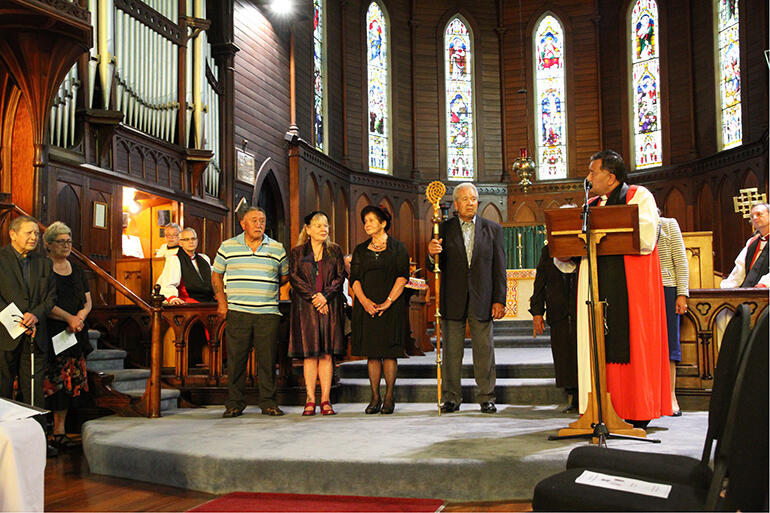
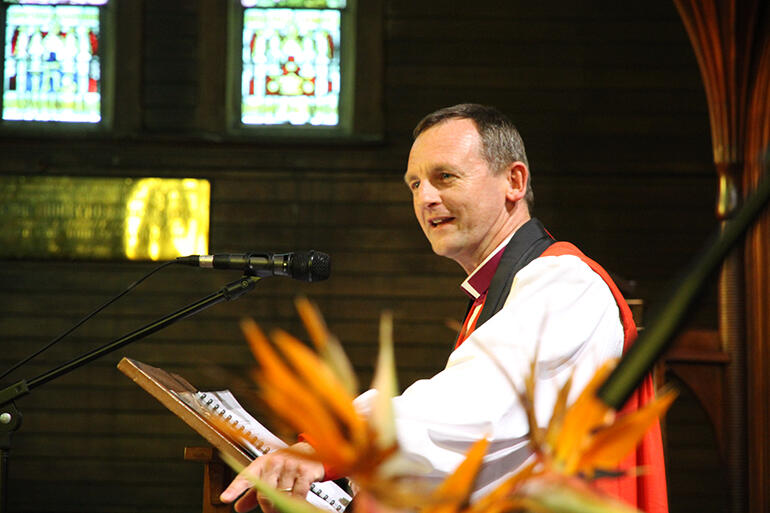
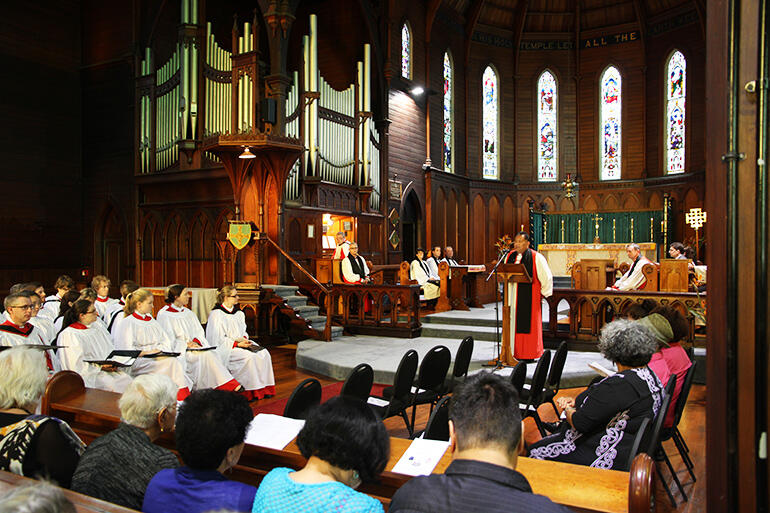


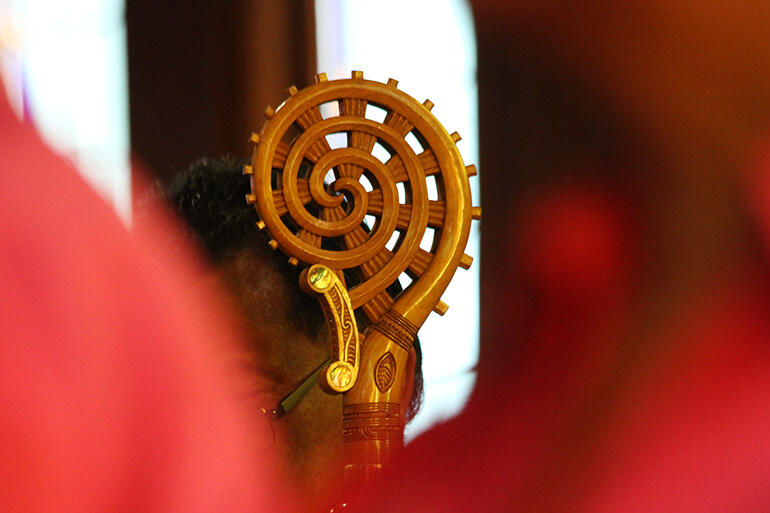

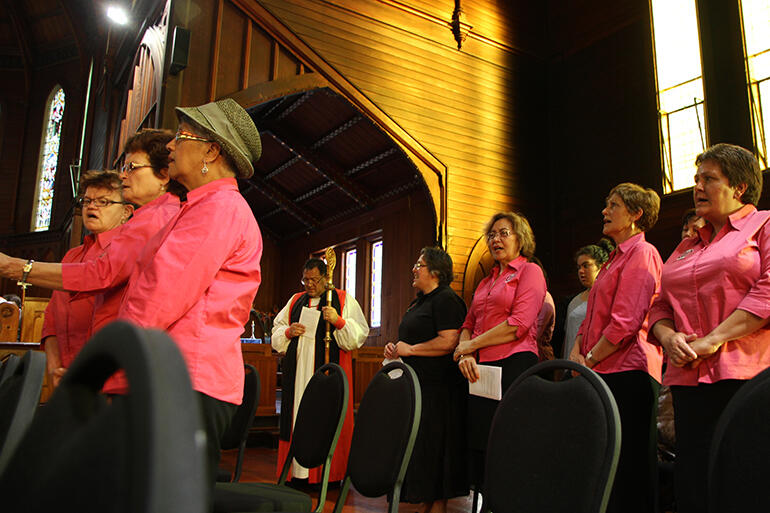
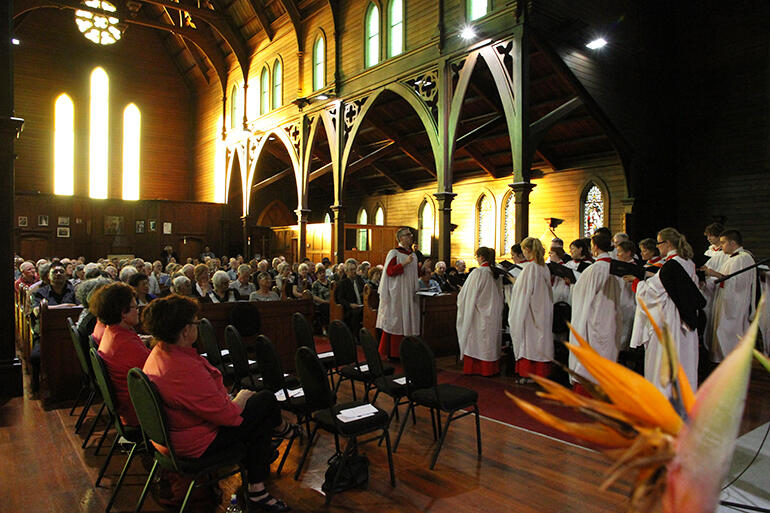
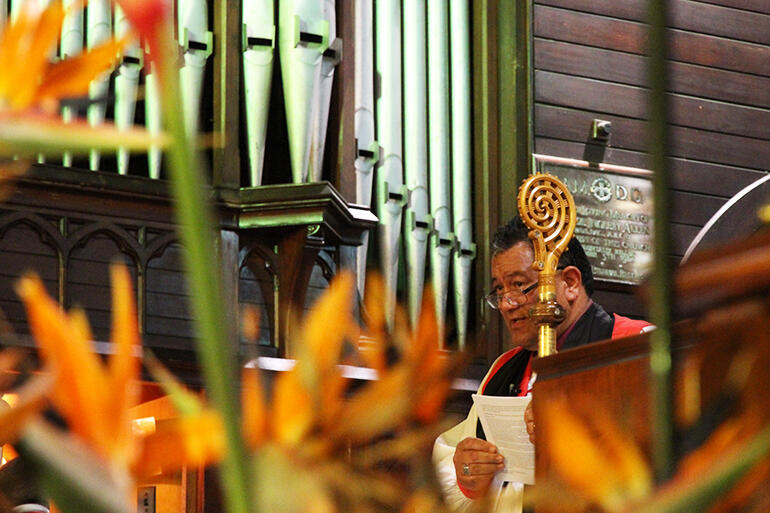
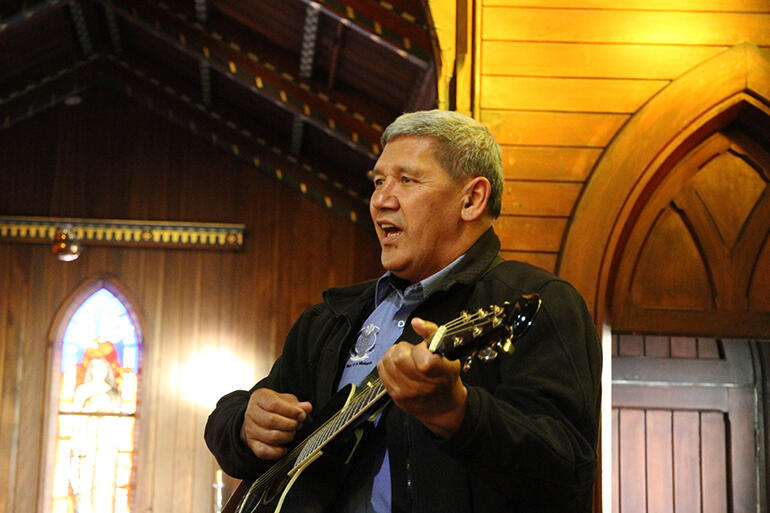
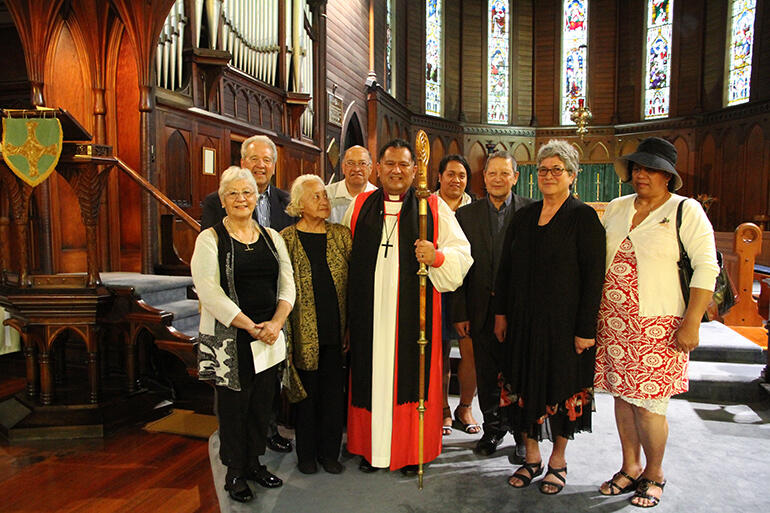
As the nine kuia and kaumatua tenderly passed the crozier from one to the other across the chancel step at the Church of the Holy Sepulchre on Sunday evening… the gauze curtain that wafts between the uriand their tupuna seemed especially thin and translucent.
Each of those gathered in the chancel were descendants of Nga Puhi clergy and laity who, on Christmas Day 1914, at Oihi, had presented that rakauto the then Bishop of Auckland, Rt Rev Walter Averill, to mark the coming of the gospel to these shores in 1814.
The present Bishop of Auckland, Ross Bay, had stumbled upon that crozier in a diocesan strong room last May.
“I opened the case,” he told Radio New Zealand, “read the inscription and I thought: what an amazing thing to have found in our bicentennial year.”
From the minute he made his find, Bishop Ross also knew that he had a perfect gift on his hands – and on Sunday evening he and Bishop Jim White presented that crozier to Bishop Kito Pikaahu, Te Pihopa o Te Tai Tokerau, along with a bicentennial gift from the diocese to the hui amorangi of $50,000.
For his part, Bishop Kito wanted descendants of those 1914 Nga Puhi clergy to join him in receiving that taonga.
He knew how they would feel, too.
“When you know that your ancestors held this rakau, and gifted it… in Te Ao Maori, it’s as if you were present when they did that.”
Lifting a burden
The crozier, of course, is the symbol of a bishop’s authority, and the standard model takes the form of a shepherd’s crook.
But this one goes a bit deeper than that, says Bishop Kito.
Because this 100 year-old bishop’s staff is surmounted not with a crook – but with Te Puna Ora, the carved spiral that symbolises the spring of life and renewal.
“What I marvel at,” he says, “is that our people back then felt that a Maori symbol was right for the crozier.”
That says to Bishop Kito that the clergy and laity wanted to express their faith, wanted to show their commitment to the church – yet they also wanted to assert pride in their God-given identity.
In his kauwhau last evening, Bishop Kito talked about being at Waitangi Marae when the Waitangi Tribunal released its landmark report affirming that Nga Puhi had never ceded sovereignty to the Crown.
“What I saw that day,” he says, “was a lifting of a burden which had laid upon Maori in the north for generations. It was a spiritual moment – the first time this argument had been recognised by anyone other than the claimants.”
“The Maori who gave this crozier to Bishop Averill in 1914 also had their own view of being free and liberated, of being empowered.
“They were saying: ‘We identify as Maori – here’s a Maori symbol, we belong, our identity is valued, and we want the Bishop of Auckland to share in that identity.’”
Te Take ki Oihi
Bishop Kito also read a 3rd century letter from St Cyprian, Bishop of Carthage, to Donatus. In his epistle, Cyprian had reflected on his long struggle from darkness to light, from captivity to liberation – and he concluded by resting in God.
“All our power is of God,” he’d written to Donatus. “I repeat, it is of God.”
Bishop Kito sees parallels between the inner struggle Cyprian described and what the Nga Puhi clergy would have contended with in 1914:
“These clergy would have wrestled, I believe, with giving this Maori symbol, and they would have had to reflect on their own lives. ‘It’s been 100 years,’ they would have thought. ‘Where have we got to?’
Bishop Kito has also found himself musing about the dreams the tupuna of 1914 might have nursed.
“Could they perhaps have conceived that the Bishop of Auckland would one day be a Maori from Auckland?”
He’s pretty sure they would have had a vision of “a closer and more intentional relationship” between Maori and Pakeha.
“What this reminds us,” he says, “is that the relationship has to endure.
“It’s now incumbent on Bishop Ross, Bishop Jim and I to ensure that the dreams, the aspirations the vision of Maori and Pakeha together 100 years ago continue to be realised.”
That’s why Bishop Kito has named his “new” crozier Te Take ki Oihi – the purpose of Oihi.
And that $50,000 bicentennial gift?
Well, Bishop Kito believes that should also be used to pursue Te Take ki Oihi.
He likes the idea of creating resources “that would be used in the amorangi and the diocese together.
“That continue to keep us connected, and help us to journey together as amorangi and diocese.”

















Comments
Log in or create a user account to comment.